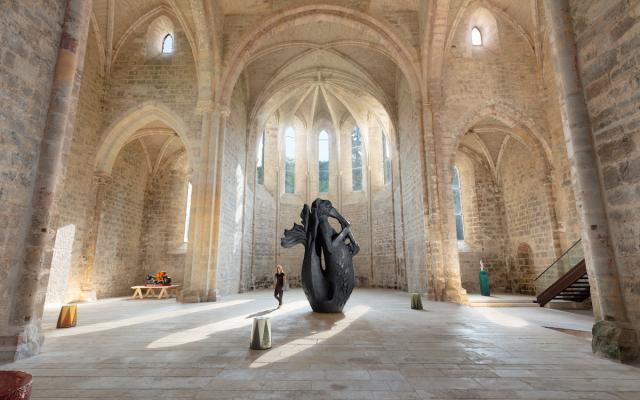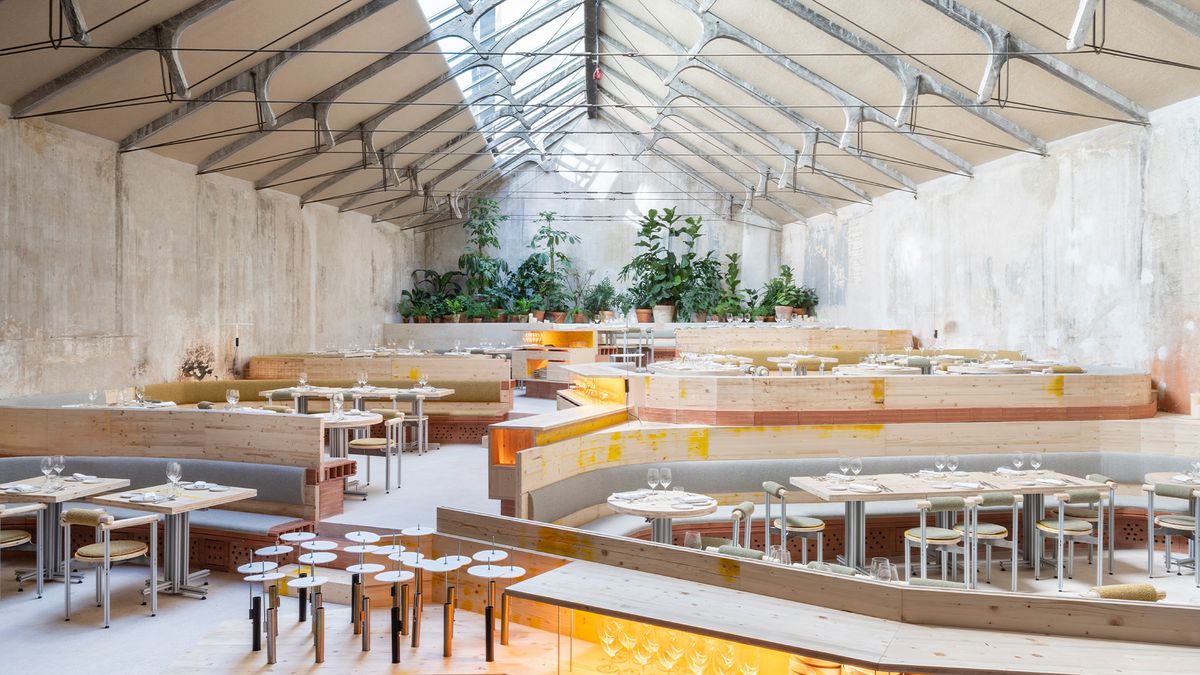wombmate!
2014 - Installation (Installation)
Mithu Sen
wombmate! by Mithu Sen is part of a project called AºVOID. In this fragmented mental map, the landscape is fleeting, embossed, and ethereal; there are moments of recognition and also a near-violent sudden emptying of memory. Bodies are skeletal, nature is in entropy, context is removed. Color is sparse, as if the world of vibrance is slowly being extracted, with only its shadows remaining. Composed of watercolor and graphite on paper, encased in hand-etched plexi-glass, this work plays with light, seeking shadows to disturb the surface of each work, in a challenge of an artwork’s materiality and the presence of the observer on the eventual image that is perceived. The concept of ‘home’ is in flight and barren; faith and security aflame. The bounty of new life, the ‘womb’ of nature, its flora and fauna in an extinguishing spiral where humans fight for their right to ‘reproduce’, beyond the nurture/nature debates of gender. Here the myths of human survival, the paradigms of social life and its assumptions of identity, of morality, of value, are under scrutiny. The artist refers to the works in this series as “shadow drawings”, spaces where “phantom limbs” linger, where pain is felt but not tangibly located. This work is Sen’s attempt to demythologize the self, to defy the idea that time is linear and thus mappable; playing with the farcity of certainty, of language, of sight.
Mithu Sen’s writing is central to her practice, as a poet from West Bengal, a region of great Indian literary history, poetic and visual tropes giving ground to her challenge of semiotics. Sen considers her tangible artworks, which range from drawing, installation, poetry, moving image, sculpture, and sound, as by-products of her gestural artistic practice. She believes that performance enables a radical hospitality in ethos and action that embrace all animate and inanimate life. Sen’s artist world is populated by the mythical, the fantastical and the absurd; her studio full of fictional, religious, spiritual, folk-loric characters, materials, and narratives that both challenge and alleviate her frustrations and conundrums in navigating the hegemony of capitalism and its insistence on categorizing, cataloguing, and valuing human labor (under historically destructive extractive, exploitative, often racist means). Her desire to conjure a world that resists assumptions of value according to use, visibility, and its tangible outputs demonstrates a deep empathic awareness of human experience and the limits imposed by exclusively valuing visual evidence, as matter that can be easily circulated, exchanged, and defined. Often incorporating abstracted languages that Sen refers to as “non-languages” or “lingual anarchy”, the artist revels in the undoing of meaning, in the provocation of taboo associated with sexuality, hierarchies of social agency, and presumptions of monolithic identities.
Colors:
Related works sharing similar palette

© » KADIST
Exhibition walk-through of Here We Live with Pheng Cheah, leading theorist of cosmopolitanism, Jerome Reyes, artist, and Marie Martraire, director, KADIST San Francisco Presenting videos and installations, alongside archival materials, the exhibition Here We Live , reveals strategies through which communities cope with the cultural tensions linked to the transformations of the places they live...

© » KADIST
Pratchaya Phinthong
2009Phinthong provided 5,000 Euros to exchange for Zimbabwean dollars, the most devalued and worthless currency in the world...

© » KADIST
Yoshua Okón
2015Fridge-Freezer is a 2-channel video installation where Yoshua Okón explores the darker side of suburbia, d escribed by the artist as “ the ideal environment for a numb existence of passive consumerism and social a nd environmental disengagement...

© » ARTS EQUATOR
Podcast 60: The Media Landscape in the Philippines | ArtsEquator Thinking and Talking about Arts and Culture in Southeast Asia ArtsEquator Viewpoints Courtesy of Asian Arts Media Roundtable July 4, 2019 Duration: 19 min In our latest podcast, art critic Pristine de Leon gives a comprehensive overview of the media landscape in the Philippines, discussing challenges to the practice and the new platforms that are paving the way for creative, incisive and timely forms of arts criticism...

© » KADIST
Daniel Boccato
2016Parrot Drawings or Paintings look like children’s drawings and seem quite innocent...

© » KADIST
Masaya Chiba
2011Fairy #2 (2011) depicts a surreal scene of roughly assembled household ephemera, potted plants, and a faintly visible figure rendered in thin red line...

© » KADIST
Kamau Amu Patton
2011Kamau Amu Patton’s painting Static Field I originates from a system of electronic and digital media...

© » LE MONDE
Le jeu d’illusions grinçantes du photographe Jeff Wall, à Bâle Cet article vous est offert Pour lire gratuitement cet article réservé aux abonnés, connectez-vous Se connecter Vous n'êtes pas inscrit sur Le Monde ? Inscrivez-vous gratuitement Article réservé aux abonnés « Boy Falls From Tree » (2010), de Jeff Wall...

© » ART & OBJECT
The Top Art Exhibitions of 2023 | Art & Object Skip to main content Subscribe to our free e-letter! Webform Your Email Address Role Art Collector/Enthusiast Artist Art World Professional Academic Country USA Afghanistan Albania Algeria American Samoa Andorra Angola Anguilla Antarctica Antigua & Barbuda Argentina Armenia Aruba Ascension Island Australia Austria Azerbaijan Bahamas Bahrain Bangladesh Barbados Belarus Belgium Belize Benin Bermuda Bhutan Bolivia Bosnia & Herzegovina Botswana Bouvet Island Brazil British Indian Ocean Territory British Virgin Islands Brunei Bulgaria Burkina Faso Burundi Cambodia Cameroon Canada Canary Islands Cape Verde Caribbean Netherlands Cayman Islands Central African Republic Ceuta & Melilla Chad Chile China Christmas Island Clipperton Island Cocos (Keeling) Islands Colombia Comoros Congo - Brazzaville Congo - Kinshasa Cook Islands Costa Rica Croatia Cuba Curaçao Cyprus Czechia Côte d’Ivoire Denmark Diego Garcia Djibouti Dominica Dominican Republic Ecuador Egypt El Salvador Equatorial Guinea Eritrea Estonia Eswatini Ethiopia Falkland Islands Faroe Islands Fiji Finland France French Guiana French Polynesia French Southern Territories Gabon Gambia Georgia Germany Ghana Gibraltar Greece Greenland Grenada Guadeloupe Guam Guatemala Guernsey Guinea Guinea-Bissau Guyana Haiti Heard & McDonald Islands Honduras Hong Kong SAR China Hungary Iceland India Indonesia Iran Iraq Ireland Isle of Man Israel Italy Jamaica Japan Jersey Jordan Kazakhstan Kenya Kiribati Kosovo Kuwait Kyrgyzstan Laos Latvia Lebanon Lesotho Liberia Libya Liechtenstein Lithuania Luxembourg Macao SAR China Madagascar Malawi Malaysia Maldives Mali Malta Marshall Islands Martinique Mauritania Mauritius Mayotte Mexico Micronesia Moldova Monaco Mongolia Montenegro Montserrat Morocco Mozambique Myanmar (Burma) Namibia Nauru Nepal Netherlands Netherlands Antilles New Caledonia New Zealand Nicaragua Niger Nigeria Niue Norfolk Island Northern Mariana Islands North Korea North Macedonia Norway Oman Outlying Oceania Pakistan Palau Palestinian Territories Panama Papua New Guinea Paraguay Peru Philippines Pitcairn Islands Poland Portugal Puerto Rico Qatar Romania Russia Rwanda Réunion Samoa San Marino Saudi Arabia Senegal Serbia Seychelles Sierra Leone Singapore Sint Maarten Slovakia Slovenia Solomon Islands Somalia South Africa South Georgia & South Sandwich Islands South Korea South Sudan Spain Sri Lanka St...

© » ARTS EQUATOR
Weekly Southeast Asia Radar: Why I sing in English; how Cambodian art can survive | ArtsEquator Thinking and Talking about Arts and Culture in Southeast Asia ArtsEquator Radar Nyein Su Wai Kyaw Soe | Frontier March 12, 2020 ArtsEquator’s Southeast Asia Radar features articles and posts about arts and culture in Southeast Asia, drawn from local and regional websites and publications – aggregated content from outside sources, so we are exposed to a multitude of voices in the region...









